Ruhende Sappho / Resting Sappho
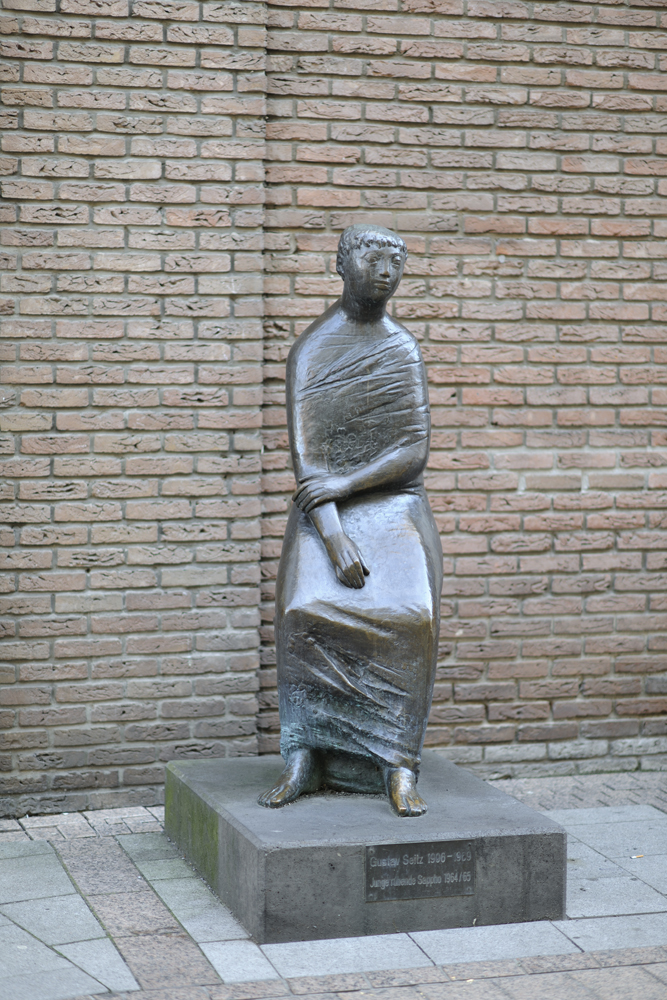

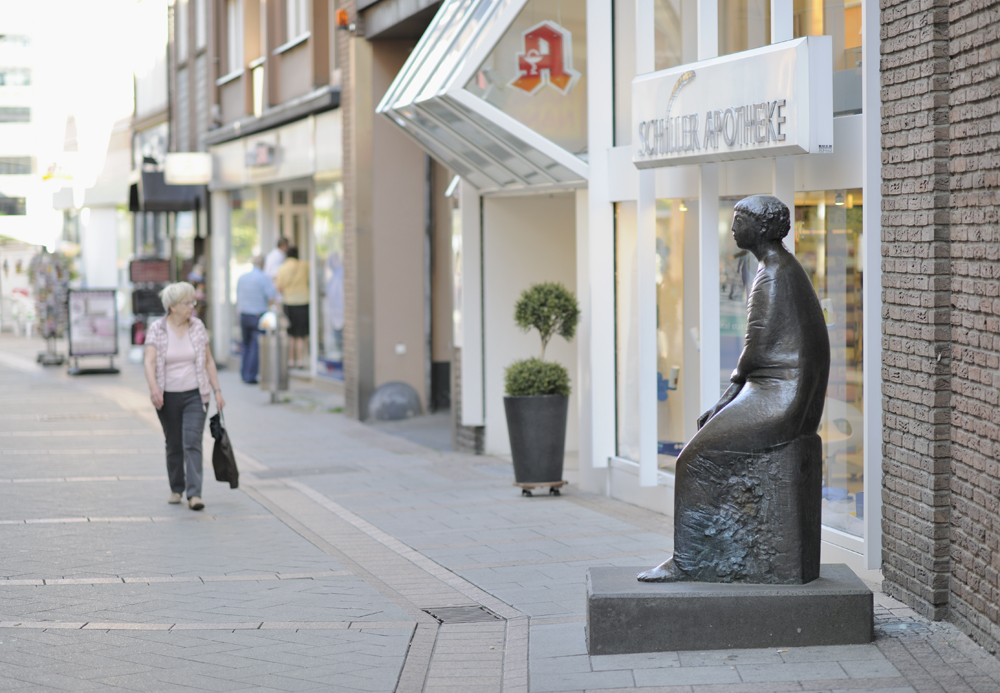
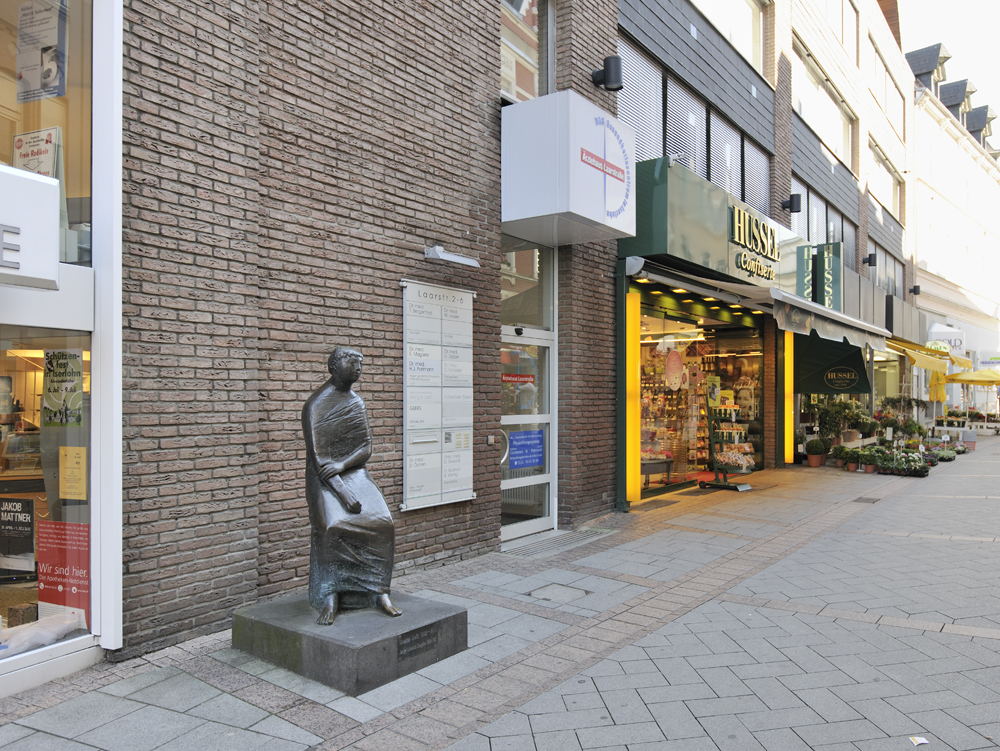
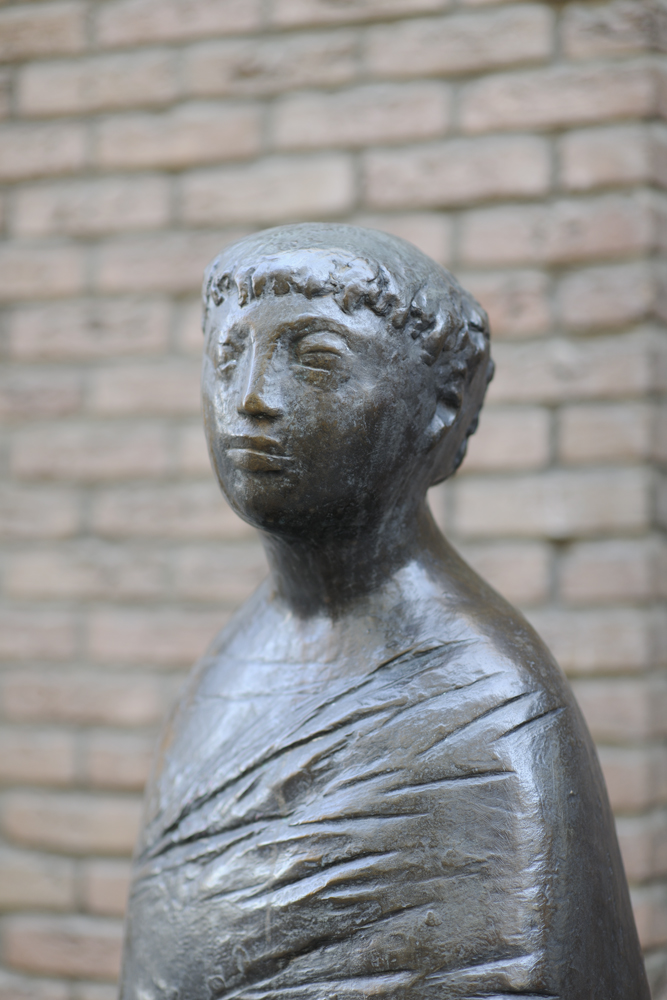
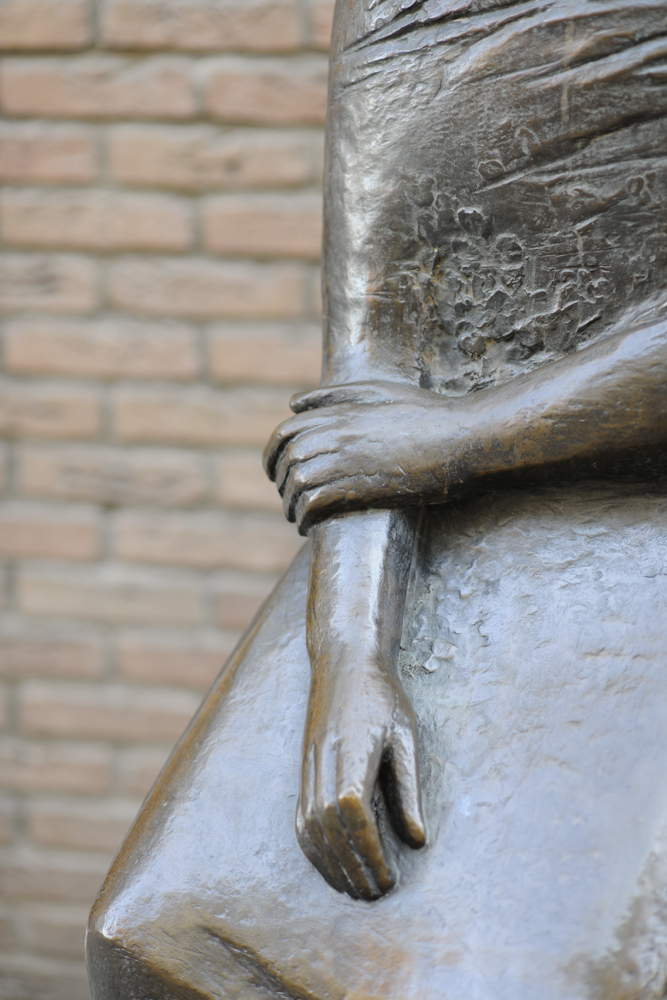
Gustav Seitz was one of the few sculptors whose work was recognized in both West and East Germany in the years during the Cold War. Resting Sappho exhibits the artist’s orientation towards pre-World War II expressionist sculptors, such as Käthe Kollwitz and Ernst Barlach, but also presents its own, more abstract style.
Atypical of a classical figure, the poetess is shown in a seated, relaxed posture with an introverted expression. The closed, blocky outline and the juxtapositioning of fine and rough details contribute to the representation of this figure as a symbol of great inner peace and serenity.
Gustav Seitz
1906
geboren in Mannheim-Neckarau; 1969 gestorben in Hamburg.
1912–1921
Volksschule, anschließend Putzerlehre.
1922–1924
Ausbildung zum Steinmetz und Steinbildhauer.
1924–1925
Studium an der Landeskunstschule Karlsruhe.
1925–1932
Staatsschule für Freie und Angewandte Kunst (heute Universität der Künste Berlin).
seit 1928
dort Meisterschüler von Wilhelm Gerstel.
1933–1938
Meisterschüler bei Hugo Lederer.
1940–1945
Soldat.
1946–1950
Professor an der TU Berlin.
1949
Nationalpreis der DDR III. Klasse für das Mahnmal für die Opfer des Faschismus in Berlin-Weißensee. Mitglied der Akademie der Künste zu Berlin (Ost); deshalb von der Hochschule für bildende Künste und an der TU (West) entlassen.
1950
Umzug in den Ostteil Berlins.
ab 1958
lebte er in Hamburg und lehrte dort an der Hochschule für bildende Künste.
1959
Ausstellung auf der documenta II.
1964
Ausstellung auf der documenta III in Kassel.
1968
Ausstellung auf der Biennale in Venedig.
Quellen:
Images:
Photos © Carsten Gliese
← Zur Startseite
Location
Iserlohn
Iserlohn, Laarstraße 6
Iserlohn, Laarstraße 6
Artist
Gustav Seitz
Year
1964
Size
Height 163 cm
Material
Bronze
Object type
Statues
